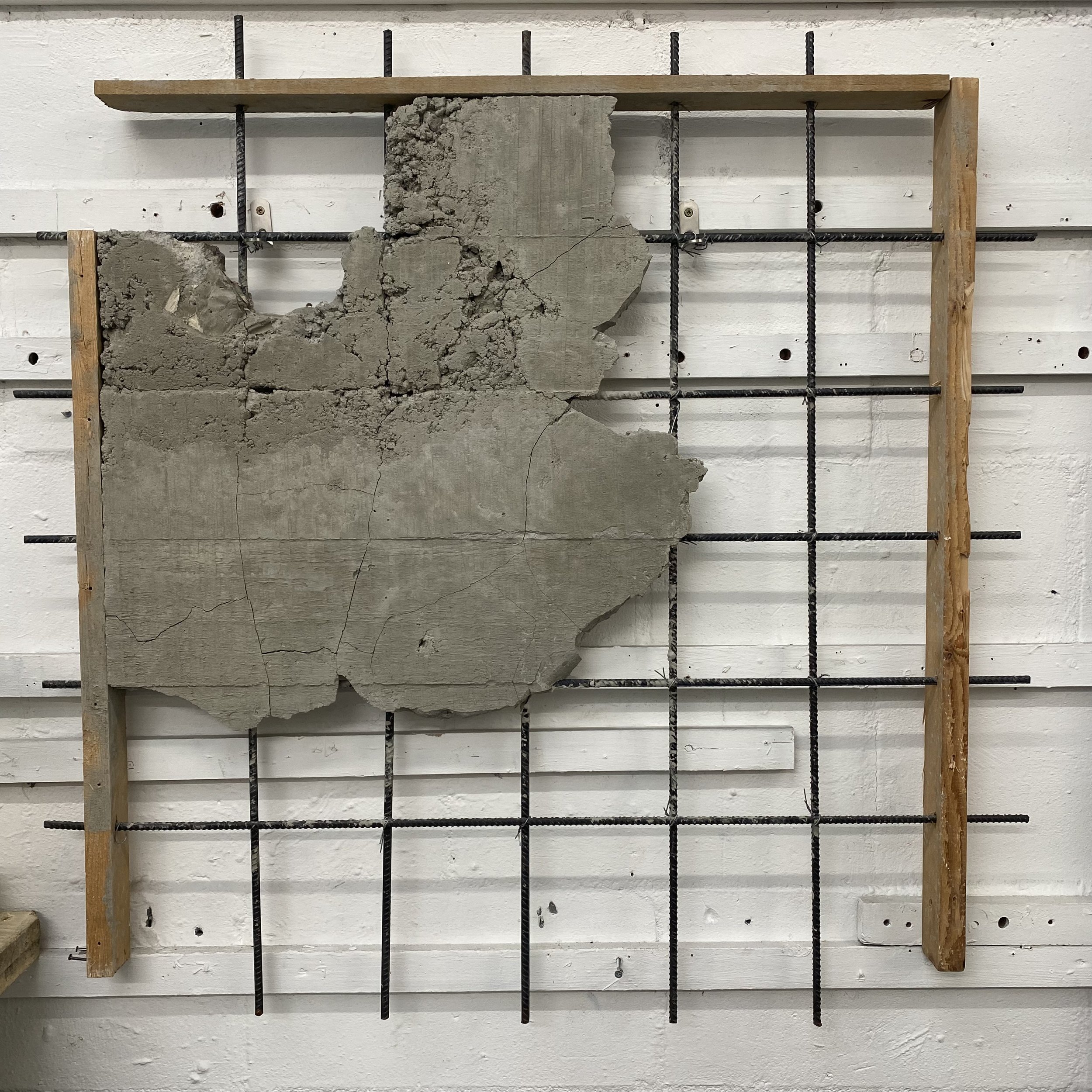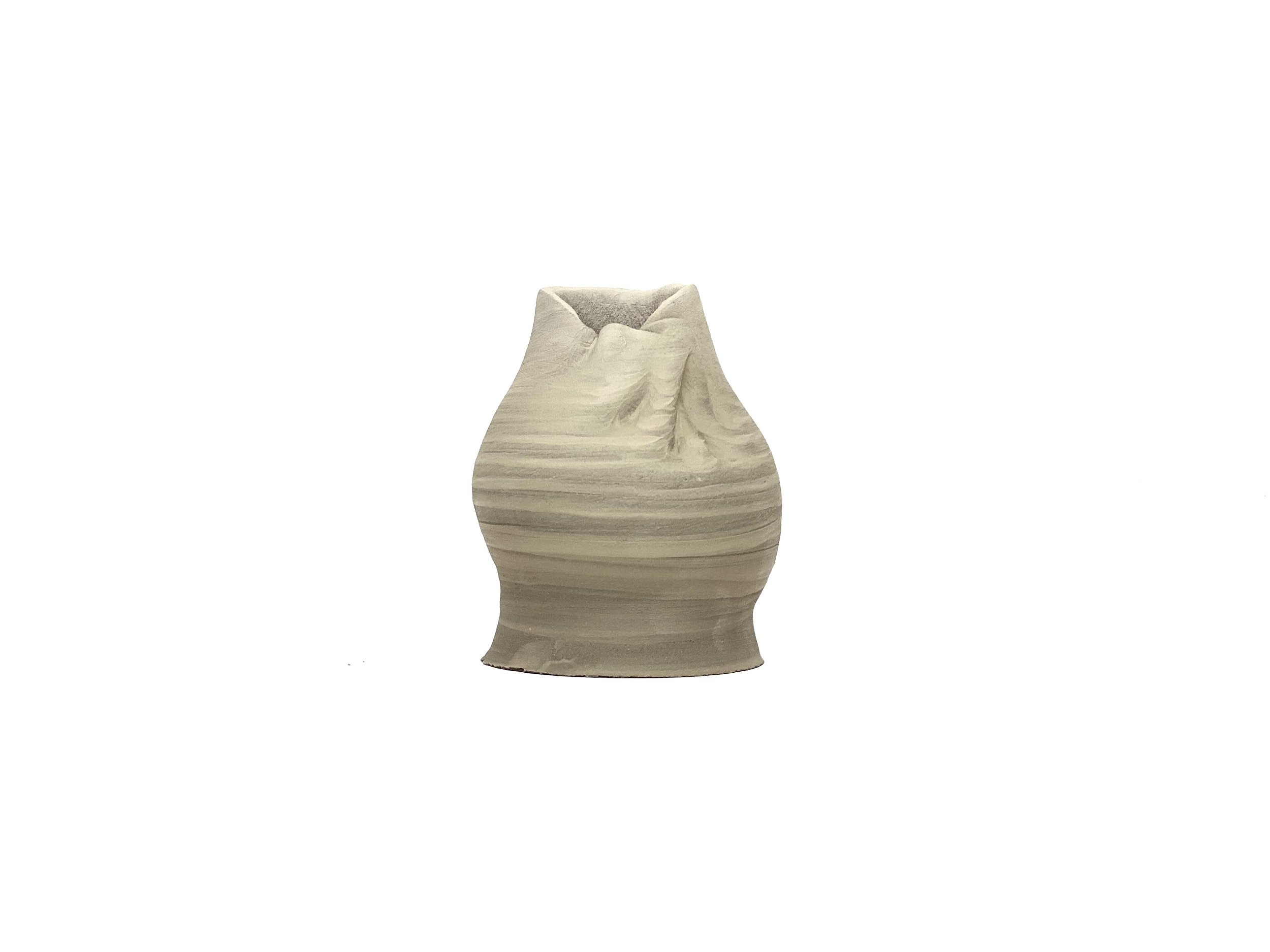Evolving Terrains
‘As a potter’, according to Theaster Gates, ‘you learn how to shape the world’. [1]
Fig. 1 Exhibit from the Theaster Gates: A Clay Sermon, Whitechapel Gallery.
Part of my ongoing research into the evolution of my practice was to go to the Whitechapel Gallery to see the Theaster Gates Exhibition. It was mentioned to me by tutor Rosie McGoldrick, with a strong suggestion that I should go. At this point of my career, it’s hard to relate my practice to that of one of a potter or ceramicist, although it has strongly influenced my making process of late. My work is deeply entrenched in meaning, the investigation of meaning and the ways I can use materials in a metaphysical context to extract deeper essentialisms that remain in latency. With these methods I employ and the materials generosity to conspire with my explorative intentions there are points of arrival that may not necessarily have been assured in the making yet definitely act as a consequence of the making process. The act of shaping requires material force. The exertion of my hands which are connected in a biomechanical relationship with the materials I choose to utilise and manipulate. Even though I concede to the fact that I may never be a master potter ( I feel I lack the desire and discipline to be one), I am aware that as a creative tool, my respect for clay as a material of potential allows me and the aggregate to work as one in a complicit way.
Visiting exhibitions has been instrumental when conserving my own pathway. I have considered what is ‘on show’ as a way of signposting my own approach to making. Therefore, intent is an important factor to acknowledge. My research into other artists always reveals what is intrinsic within my own process. Two key features that come up time and again are questioning and investigation. My work is inextricably linked to an ontological process of embodying the real and then processing the accidental properties of the object form in a non relation to the form. By this I mean, when using concrete, I don’t necessarily want the work to read as ‘weighty, dense or heavy’. I am starting to see my work as a continuum. A development of relational conversations within making. I am working toward developing a practice that continues on from Bruce Nauman, through Rachel Whiteread, Doris Salcedo, where meaning is in the choice of material, not because of the form as such. Each of the artists above communicate the modality of existence very successfully. Rachel Whiteread’s command of bringing us into contact with object space where we become “the wall’ [1] Or Doris Salcedo’s - and here I want to make an exact distinction to the suspension of weight, the heavy ‘becoming’ weightless - in her epic work Abyss 2005 (see fig. 2) Salcedo manages to pull off the impossible by suspending the sheer entirety of a brick built tomb like architecture.
I have a fascination for all things spatial but also for all things material, in the sense that space is usually a form of material reading, or, rather, a material condition. Space is not just simply created by architecture, which seems to have a hold on it; it is also created by the visual arts. [3]
The idea of architecture is expanded by Harvard Professor Giuliana Bruno, who reminds us that architecture is not just simply the creation of space. For Bruno, space is a continuation, that which becomes part of time and memory. This “cultural mapping” bruno continues, predicates the material conditions that, and this is where I see my overlap, produce further investigations which contain an agency to either become social, environmental, scientific, or political. For example, if we take what artist Richard Serra, someone synonymous with weight, gravity and dense material structures, did with his work Television Delivers People 1973, the medium is as far away from clumps and sheets of material we could immediately and obviously associate his work with. It is critical to make comparison here to a process that informs my own approach to utilising different and contrasting disciplines. Serra produced Television Delivers People 1973 at a time when he was experimenting with other materials and modalities of production. This jump in Serra’s early period between sculpture and film work - Serra recognized as one of the early video artists of his time in the US [4] - mirrors my own endeavours to ‘jump’ between the “stabilizing image” [5] of the material and the stratified knowledges extracted from the ‘aesthetics of the medium.’ [6] Layers are a part of the production, but also, the critical engagement of finding ourselves as audience to the work adds a key component to the anthropomorphic nature of the humanistic interpretation of my work. Aesthetics appeal to the senses [7] therefore, and again I refer to that which underpins my CCS work, we find ourselves in the latency of the work, the withdrawn and the potential produced and carried over as Sara Ahmed argues, as a ‘givenness’. [8] A givenness which holds in reserve a potential “so that the object becomes more than the profile that is available in any moment.” [9]
Whilst trying to develop my studio practice, it has become apparent that my work is made for a wide viewership. I say this because my work exists in a space that slots between call and response. The call being research and thinking. Response being making and showing. The work to the right is about as much as what is missing from the grid as to what is ‘present’.
Stuart Lee, 2019. This work from year one has continued to remain the start of a continuing body of material investigation into being.
Fig. 2. A pre-fired unglazed ceramic. For me this embodies ‘autonomy’ over description, effect or end result.
In this next example on the left, the critical element to the work are the folds. (see fig.2) They take a form of the natural. They are beyond ‘design’ but in the production, are a result of the bodily functions in making. As I start to consider what these do for my major project, which will be an investigation into the withdrawn, latency and critical distance, I see these works as resolving a way to work towards what is is I want my practice to embody the most. Ceramics at this point are an investigation into ecological thinking in an environmental framework. the Methodology is in the materiality of clay which embraces form and sets that form back into the object relation. This relation is outside of thinking, not necessarily because of it. It’s prudent to reserve how access to a subject is not always dependent on a relationship. to thinking. “In this, Scientific truth is no longer what conforms to an in-itself supposedly indifferent to the way in which it is given to the subject [...] Which means that we cannot know anything that would be beyond our relation to the world.” [10] This Hegelian root brings about our exploration of the Aristotelian idea of finitude. As a practice, my work is a counter to this approach to object relation. Its critical to addressing any reductionism that prevents essential or remote qualities that a scientific method may sanction. Here I want the work to express, what Adorno calls “autonomy”, to counter the exactitude of saying something is only what it is, and how that is only in relation to thought. Otherwise, we are robbed of a deeper essentialism. And it is this essentialism, hidden in reserve, that I want to explore in consideration of the art object. It is this strategy I want to employ as I work towards my major project. and that is why I prefer to do that with concrete. I’m even finding glazing my ceramics too ‘performative’.
[1] Theaster Gates, ‘Theaster Gates: A Clay Sermon’, Whitechapel Gallery review, <https://www.whitechapelgallery.org/exhibitions/theaster-gates-a-clay-sermon/> [accessed 10/12/2021]
[2] Rachel Whiteread, ‘Ghost 1990’, National Gallery of Art, <https://www.nga.gov/collection/art-object-page.131285.html> [accessed 11/12/2021]
[3] Marquard Smith, Visual Culture Studies: Interviews With Key Thinkers, (London: Sage, 2008), p. 145
{4] See Maria Anna Tappeiner, Richard Serra, 2004.
[5] Craig Owens, ‘The Allegorical Impulse: Toward a Theory of Postmodernism’, October, Vol. 12 (Spring, 1980) pp. 67-86 <https://www.jstor.org/stable/778575> (p. 71)
[6] See Richard Serra, “Prisoner’s Dilemma,” in Richard Serra, 1980, p. 41.
[7] See Aristotle, Aristotle’s Metaphysics (London: Davis, Wilks,Taylor, 1801), Warburg Institute research.
[8] Sara Ahmed, ‘Orientations Matter’, New Materialisms: Ontology, Agency, and Politics, ed. by Diana Coole and Samantha Frost, (Durham: Duke University Press, 2010) pp. 234 – 257 (p. 238)
[9] ibid
[10] Meillassoux, Quintin, After Finitude: An Essay on the Necessity of Contingency, (London: Continuum, 2008) p.4



